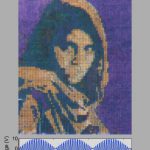
Debashis Chanda and his team’s research on flexible, skin-like, color displays was recently featured as part of the National Science Foundation’s International Year of Light Celebration.
2015 was proclaimed the International Year of Light by the United Nations as an opportunity to raise global awareness about the importance of light and optical technologies in life, for our future and for the development of society. The National Science Foundation, along with multiple other organizations in the field, brought the International Year of Light celebration to Washington D.C. with multiple exhibitions.
In continued celebration, the NSF featured weekly images and information throughout the rest of 2015 about NSF-funded light-based research from around the world in an effort to raise awareness and show recognition of outstanding research in the field.
The National Science Foundation is an independent federal agency created by Congress in 1950 “to promote the progress of science; to advance the national health, prosperity, and welfare; to secure the national defense…” With an annual budget of $7.3 billion (FY 2015), the NSF is the funding source for approximately 24 percent of all federally supported basic research conducted by America’s colleges and universities. In many fields such as mathematics, computer science and the social sciences, NSF is the major source of federal backing.